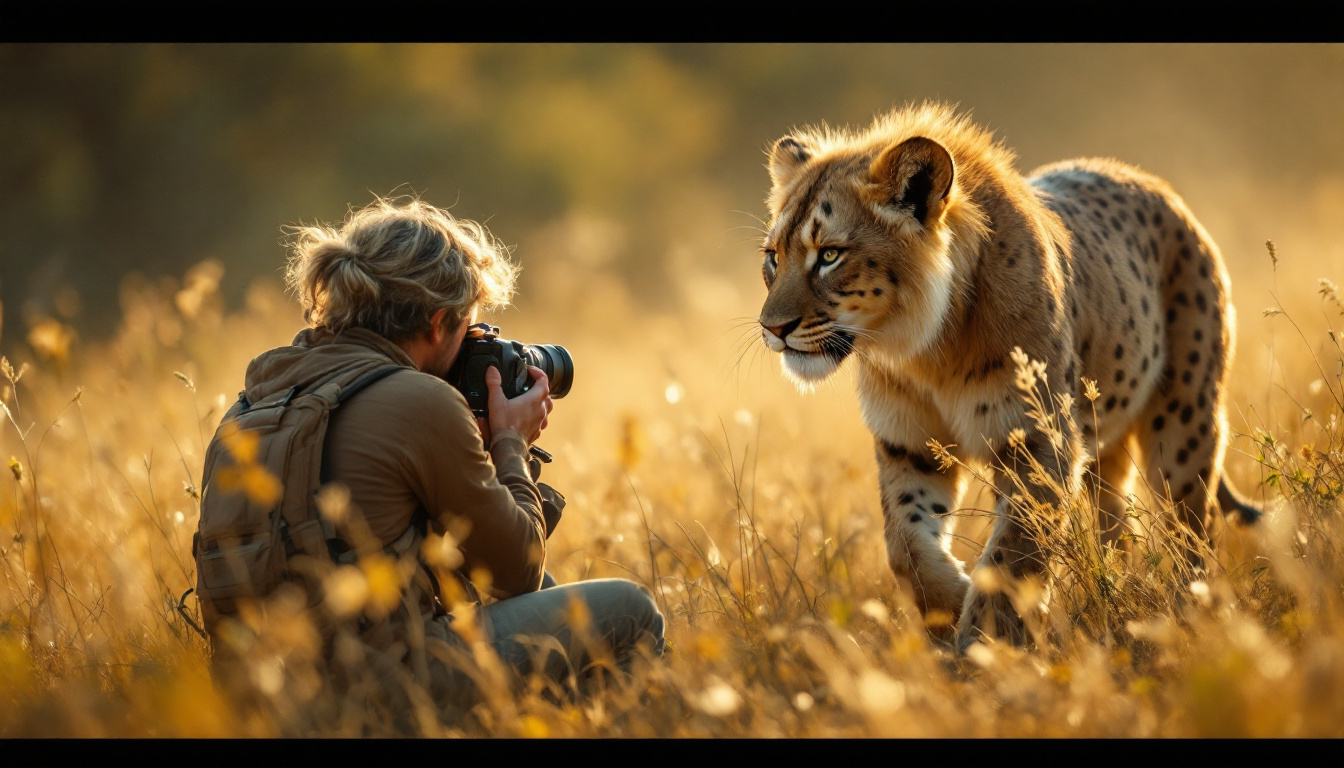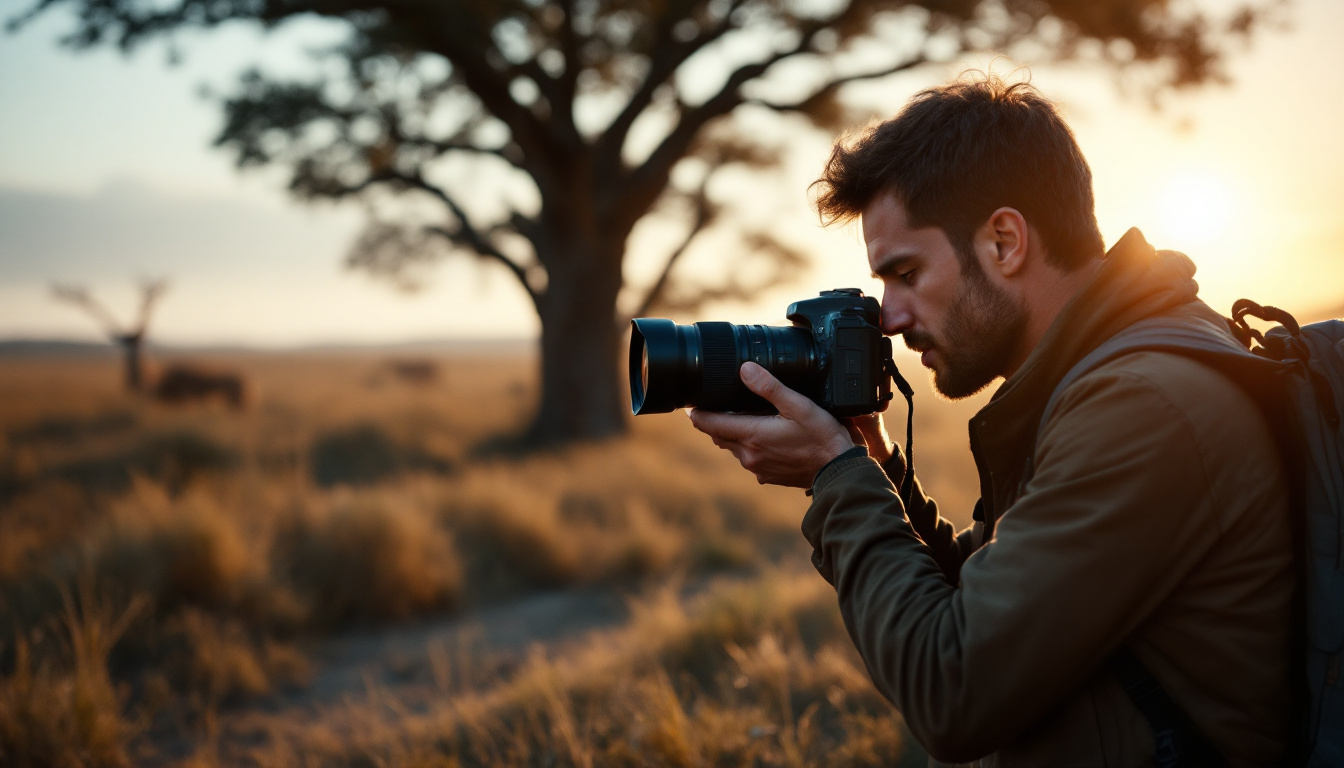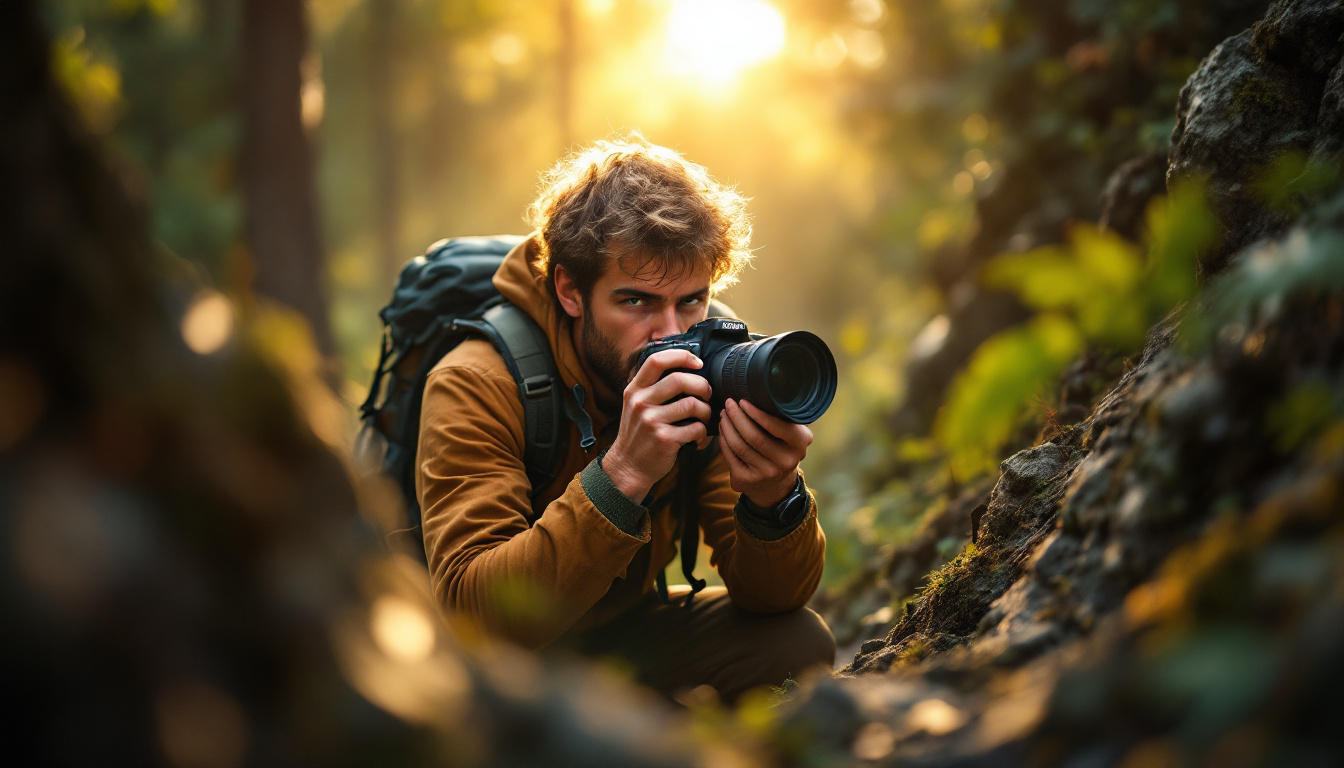Wildlife photography is not just about capturing images of animals in their natural habitats; it’s about telling a story and connecting with nature. Whether you are a beginner looking to improve your skills or a seasoned photographer seeking fresh perspectives, mastering the art of wildlife photography requires understanding various techniques and approaches. In this article, we will delve into the essentials of wildlife photography, helping you capture stunning shots that resonate with viewers.
Understanding the Basics of Wildlife Photography
To start your journey in wildlife photography, it’s vital to comprehend the basic principles that distinguish it from other photography genres. Wildlife photography often requires a blend of technical skill and an intrinsic understanding of animal behavior. This unique combination allows photographers to capture not just the image of an animal, but also the essence of its natural habitat and behavior, creating a narrative that resonates with viewers.

The Importance of Patience in Wildlife Photography
Patience is perhaps the most critical virtue in wildlife photography. Animals do not always perform on cue, and a successful shot may require hours of waiting. Often, it means sitting quietly and observing your surroundings, allowing wildlife to reveal itself in its own time. This patience not only increases your chances of getting a great shot but also enhances your overall experience in nature. The moments of stillness can lead to unexpected encounters, such as a deer grazing nearby or a bird taking flight, which can provide unique photographic opportunities that you might miss if you rush the process.
Essential Gear for Wildlife Photography
The right gear can significantly improve the quality of your wildlife photos. Here are some essential items every wildlife photographer should consider:
- Camera: A DSLR or mirrorless camera with fast autofocus and good low-light performance.
- Lens: A telephoto lens (200mm or longer) is ideal for capturing distant animals.
- Tripod: A sturdy tripod helps stabilize your camera, especially in low light.
- Binoculars: Useful for spotting animals from a distance.
Investing in quality gear tailored for wildlife photography can make a significant difference in capturing detailed and vibrant images. Additionally, consider carrying extra batteries and memory cards, as wildlife photography often leads to long outings where you might miss the perfect shot if you’re unprepared. A weather-sealed camera bag can also be invaluable, protecting your equipment from the elements while you traverse various terrains in search of the perfect shot.
The Role of Light in Capturing Stunning Shots
Light is a fundamental aspect of photography. Understanding how to use natural light effectively will elevate your wildlife images. Early morning and late afternoon are often referred to as the “golden hours,” and shooting during these times can provide soft, diffused light that enhances colors and textures. Avoid harsh midday sun, which can create unflattering shadows and glare. Furthermore, experimenting with backlighting can add a dramatic effect to your images, illuminating the subject from behind and creating a halo effect that highlights the animal’s features.
Additionally, being aware of the weather conditions can greatly influence the quality of your photographs. Overcast days can be advantageous, as the clouds act as a natural diffuser, softening the light and reducing harsh contrasts. This can be particularly beneficial for capturing the intricate details of fur or feathers. Understanding how different lighting conditions affect your subject will not only improve your technical skills but also enhance your creative vision, allowing you to portray wildlife in a way that captivates and informs your audience.
Developing Your Skills in Wildlife Photography
Once you’ve grasped the basics, the next step is to continue developing your skills. This involves learning various techniques that will allow you to capture wildlife in diverse situations and environments. The world of wildlife photography is vast and ever-changing, and as you gain experience, you will find that each outing presents unique challenges and opportunities for growth.

Techniques for Capturing Animals in Motion
Animals are unpredictable and often fast-moving. To capture them in motion, you need to adjust your camera settings appropriately. Using a fast shutter speed can freeze action and minimize motion blur. Continuous shooting mode can also be highly beneficial, allowing you to take multiple shots in quick succession, increasing the likelihood of capturing that perfect moment. Additionally, anticipating the animal’s movements can greatly enhance your chances of getting the shot; observing their behavior and understanding their patterns can help you position yourself effectively before they make their next move.
Mastering the Art of Composition in Wildlife Photography
Composition is crucial in wildlife photography. Applying the rule of thirds—a basic principle of composition—can lead to more engaging photos. Placing the animal off-center can create a sense of movement and bring the viewer’s eye into the frame. Additionally, incorporating elements of the environment, such as trees or water, can add depth and context to the shot. Don’t hesitate to experiment with different angles and perspectives; sometimes, a shot taken from an unexpected viewpoint can yield stunning results and tell a more compelling story about the wildlife and their habitat.
Tips for Capturing Close-Up Shots
Close-up shots can reveal details often missed in wide-angle shots. To capture these intimate moments:
- Use a macro lens or a lens with a close focusing capability.
- Get low to the ground to align your shot with the subject’s perspective.
- Focus on the eyes of the animal, as they convey emotion and connection.
Close-up photography can be incredibly rewarding, providing insight into the beauty of wildlife and their intricate features. Moreover, patience is key; often, the best close-up shots come after waiting quietly for the animal to become comfortable with your presence. This not only increases your chances of getting a great shot but also allows you to observe the animal’s behavior more closely, enriching your overall experience in the field. Remember, the goal is to capture the essence of the creature, revealing its personality and the unique characteristics that make it special.
Overcoming Challenges in Wildlife Photography
Wildlife photography is not without its challenges. Recognizing potential obstacles and developing strategies to overcome them is essential for success.

Dealing with Unpredictable Animal Behavior
One of the most formidable challenges in wildlife photography is dealing with unpredictable animal behavior. Animals may act erratically, and their movements can be difficult to predict. Understanding animal behavior and habitats can help you anticipate their actions. Researching the specific species you plan to photograph can provide insights into their habits, making it easier to capture them in desirable scenarios. Additionally, spending time in the field observing animals without a camera can enhance your understanding of their routines and interactions, allowing you to be better prepared when the moment to shoot arises. Patience is often the key; sometimes, waiting quietly for hours can yield the most rewarding shots.
Handling Difficult Weather Conditions
Wildlife photography often requires you to brave various weather conditions. Rain, fog, and snow can be daunting, but they can also create unique atmospheres for photos. Ensure you have weather-sealed equipment or protective gear for your camera. Embrace the elements, as they can add drama and mood to your images. For instance, misty mornings can create a mystical backdrop, while a light snowfall can lend a serene quality to your photographs. Moreover, understanding how different weather conditions affect animal behavior can be advantageous; many animals are more active during certain weather patterns, providing opportunities for stunning captures that showcase their resilience in nature.
Ensuring Ethical Practices in Wildlife Photography
Ethical considerations are paramount in wildlife photography. Always respect the animals and their habitats by adhering to the following guidelines:
- Maintain a safe distance to avoid stressing the animals.
- Avoid using flash photography, as it can startle wildlife.
- Leave no trace by not disturbing the environment or leaving litter behind.
Practicing ethical wildlife photography not only ensures the safety of animals but also helps preserve their natural habitats for future generations. Furthermore, engaging with local conservation efforts can deepen your understanding of the ecosystems you are photographing. By supporting wildlife organizations and participating in community initiatives, you can contribute to the protection of the very subjects you aim to capture. This commitment to conservation enriches your work, allowing you to tell a more compelling story through your photography that resonates with viewers and raises awareness about the importance of preserving wildlife and their environments.
Post-Processing Techniques for Wildlife Photos
Post-processing is a vital step in enhancing wildlife images. Today’s digital photography allows for significant adjustments that can transform your photos.
Enhancing Images with Editing Software
Software like Adobe Lightroom or Photoshop can help streamline your editing process. Basic adjustments, including exposure correction and sharpening, can significantly improve the quality of your photos. Experiment with different editing techniques, but be mindful not to overdo it; the goal is to maintain the authenticity of the wildlife you captured.
Tips for Cropping and Framing
Cropping can dramatically change the composition of your photo. When cropping, consider the rule of thirds to create a more balanced image. Removing distracting elements from the frame can also help highlight your subject, making it stand out.
Color Correction and Enhancement Techniques
Color correction is essential for wildlife photography. Adjusting white balance can bring out the true colors of the animal and its environment. Additionally, tweaking saturation and contrast can make the image more vibrant and engaging. Always aim to enhance colors naturally, so the photograph remains true to its original state.
In conclusion, mastering wildlife photography is a rewarding journey that combines patience, skill, and respect for nature. By understanding the basics, developing your skills, overcoming challenges, and utilizing effective post-processing techniques, you can create stunning images that showcase the beauty of wildlife. Embrace the process, and let each outing further your journey into the magnificent world of wildlife photography.
As you continue to refine your wildlife photography skills and capture the beauty of nature, remember that sharing your stunning images with clients and collaborators is just as important as taking them. Cliqora is here to streamline that process for you. Our intuitive SaaS platform offers super fast resumable uploads, ensuring your high-quality photos reach your clients without a hitch. With Cliqora, you can manage your projects, contracts, and payments all in one place, and your clients can relish in the convenience of accessing their content forever through our mobile app. Plus, with AI face detection, privacy is enhanced, allowing for selective sharing. Say goodbye to the hassle of hard drives and Google Drive. Embrace the future of photography content management with Cliqora. Register for Early Access now and create your first project for free!



